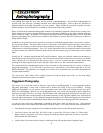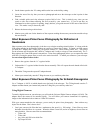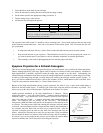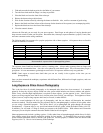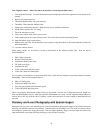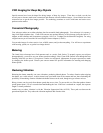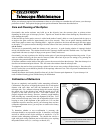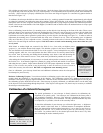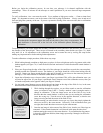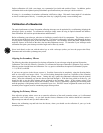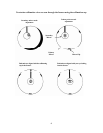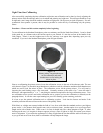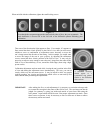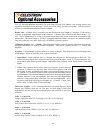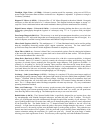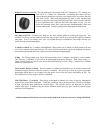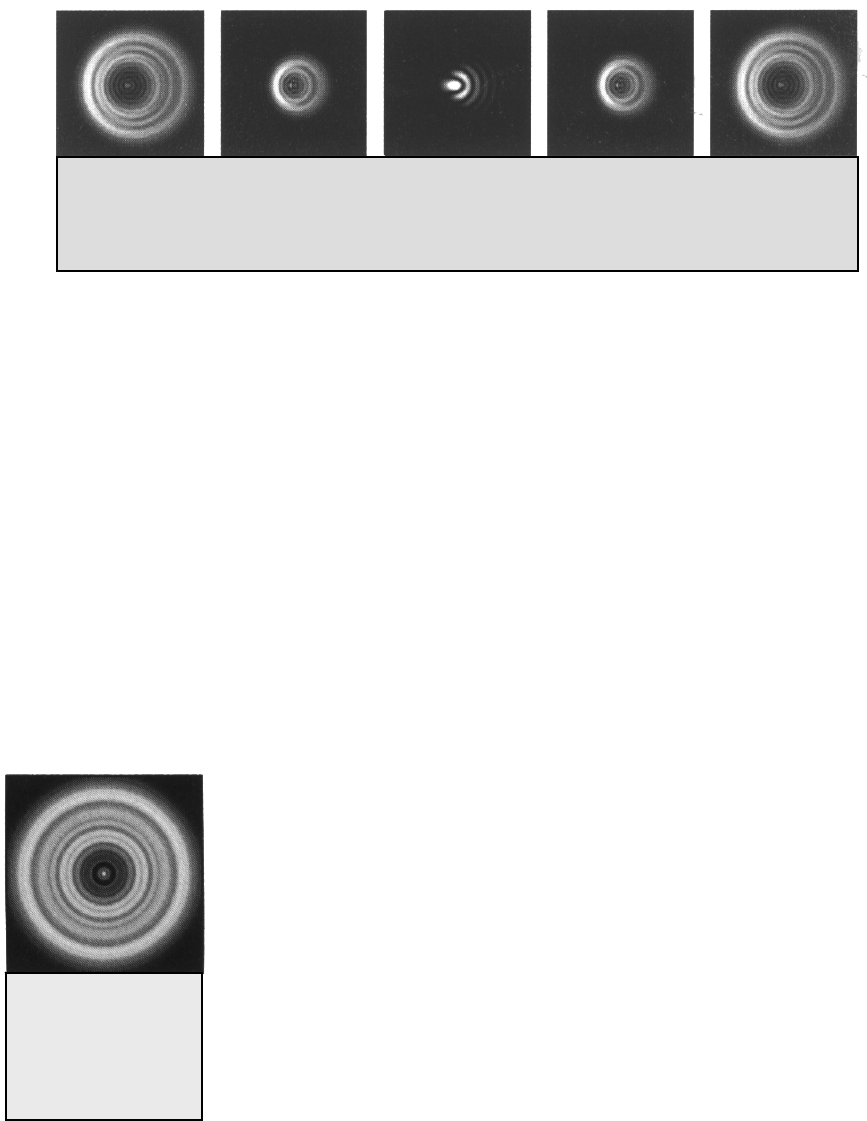
43
Before you begin the collimation process, be sure that your telescope is in thermal equilibrium with the
surroundings. Allow 45 minutes for the telescope to reach equilibrium if you move between large temperature
extremes.
To verify collimation, view a star near the zenith. Use a medium to high power ocular — 12mm to 6mm focal
length. It is important to center a star in the center of the field to judge collimation. Slowly cross in and out of
focus and judge the symmetry of the star. If you see a systematic skewing of the star to one side, then re-collimation
is needed.
To accomplish this, you need to tighten the secondary collimation screw(s) that move the star across the field toward
the direction of the skewed light. These screws are located in the secondary mirror holder (see figure 7-3). Make
only small 1/6 to 1/8 adjustments to the collimation screws and re-center the star by moving the scope before
making any improvements or before making further adjustments.
To make collimation a simple procedure, follow these easy steps:
1. While looking through a medium to high power eyepiece, de-focus a bright star until a ring pattern with a dark
shadow appears (see figure 7-4). Center the de-focused star and notice in which direction the central shadow is
skewed.
2. Place your finger along the edge of the front cell of the telescope (be careful not to touch the corrector plate),
pointing towards the collimation screws. The shadow of your finger should be visible when looking into the
eyepiece. Rotate your finger around the tube edge until its shadow is seen closest to the narrowest portion of
the rings (i.e. the same direction in which the central shadow is skewed).
3. Locate the collimation screw closest to where your finger is positioned. This will be the collimation screw you
will need to adjust first. (If your finger is positioned exactly between two of the collimation screws, then you
will need to adjust the screw opposite where your finger is located).
4. Use the hand control buttons to move the de-focused star image to the edge of the field of view, in the same
direction that the central obstruction of the star image is skewed.
5. While looking through the eyepiece, use an Allen wrench to turn the collimation
screw you located in step 2 and 3. Usually a tenth of a turn is enough to notice a
change in collimation. If the star image moves out of the field of view in the
direction that the central shadow is skewed, than you are turning the collimation
screw the wrong way. Turn the screw in the opposite direction, so that the star
image is moving towards the center of the field of view.
6. If while turning you notice that the screws get very loose, then simply tighten the
other two screws by the same amount. Conversely, if the collimation screw gets
too tight, then loosen the other two screws by the same amount.
7. Once the star image is in the center of the field of view, check to see if the rings are
concentric. If the central obstruction is still skewed in the same direction, then
continue turning the screw(s) in the same direction. If you find that the ring pattern
is skewed in a different direction, than simply repeat steps 2 through 6 as above for
the new direction.
Figure 7-4
Even though the star pattern appears the same on both sides of focus, they are asymmetric. The
dark obstruction is skewed off to the left side of the diffraction pattern indicating poor
collimation.
Figure 7-5
A collimated telescope
should appear
symmetrical with the
central obstruction
centered in the star's
diffraction pattern.



